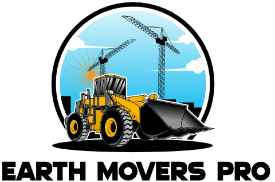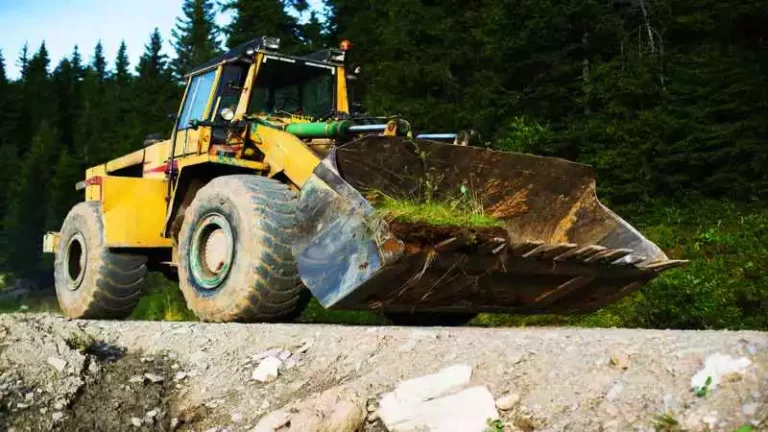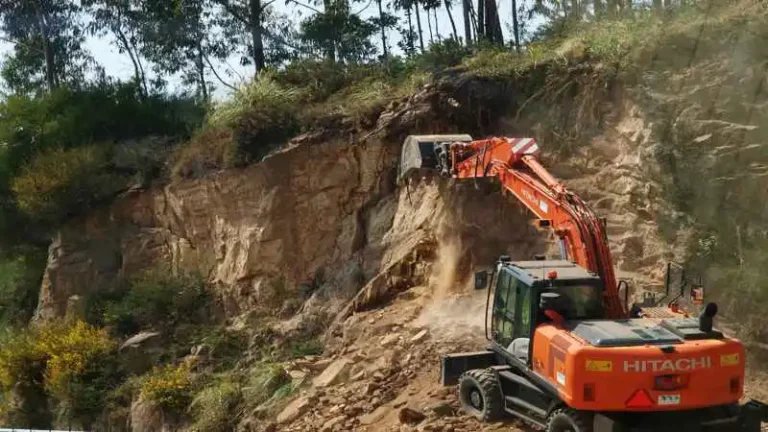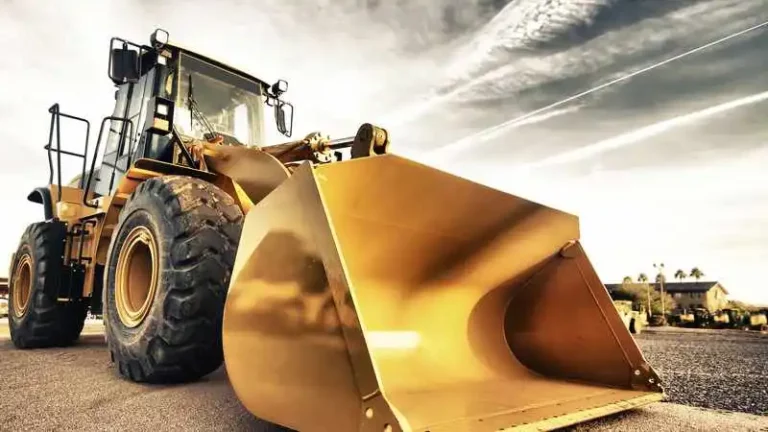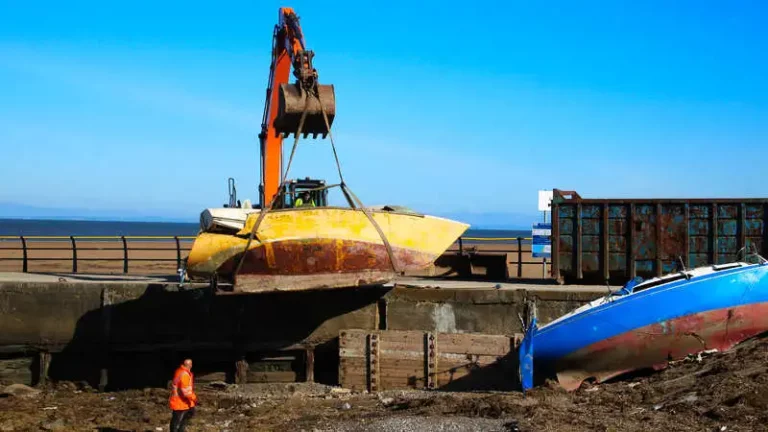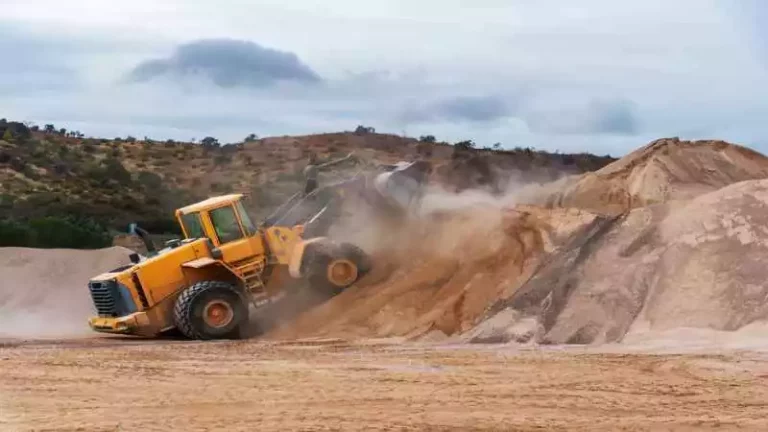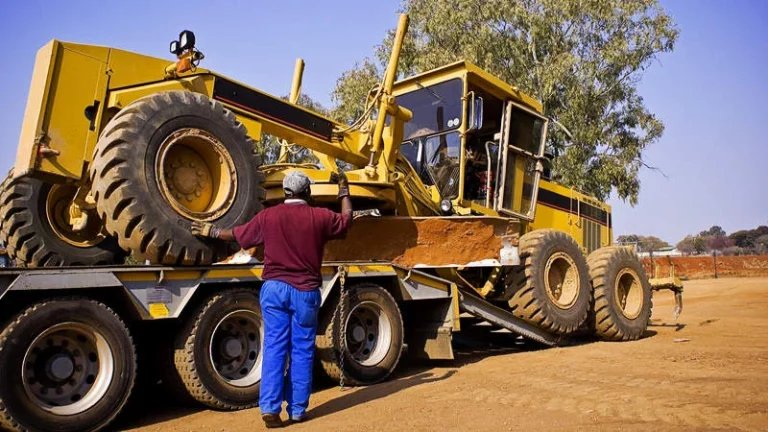Are you grappling with estimating how much land a single bulldozer can clear in a day for your upcoming construction project? As an experienced bulldozer operator, I’ve faced the same issue when planning projects and have dug deep to find the most accurate answers.
My comprehensive guide will enlighten you on factors influencing a bulldozer’s productivity, cost-effective methods for clearance, and related services integral to successful land clearing. Ready to give yourself peace of mind? Let’s dig right in!
Key Takeaways
- The productivity of a bulldozer in clearing land depends on factors such as terrain type, blade size, and cutting height.
- On average, it takes 2.67 hours for a bulldozer operator to clear one acre of land.
- Clearing land with loose soil is generally easier than working with rocky or compacted terrain.
- Financial aid options and selling excess timber can offset the cost of land clearance.
- DIY approaches to land clearance can be cost-effective, but it’s important to assess the size of the project and consider hiring a professional for extensive or complex areas.
Understanding Bulldozer Operations
A bulldozer plays a crucial role in land clearing, using its powerful blades and treads to push materials away and create space for construction or landscaping projects.
Role of a Bulldozer
The bulldozer is critical in construction and landscaping projects as a heavy-duty vehicle. Its main task involves scraping, pushing, or removing materials like dirt, rocks, and debris using its powerful blade.
It’s practically an earth-moving powerhouse that creates clear spaces for various purposes, such as building structures or prepping the ground for agricultural practices. This sturdy equipment is not just limited to moving piles of earth; it also levels uneven terrain and backfills holes or trenches to prepare job sites efficiently.
The work scope of a bulldozer greatly depends on factors like its blade size and type of terrain. These variables affect how many acres can be cleared daily by an operator commandeering this mighty machinery.
Factors contributing to its effectiveness
The effectiveness of a bulldozer in clearing land hinges on several factors. Its blade size and type can significantly impact the quantity of material it displaces at each pass, thereby affecting the speed and efficiency of work.
The bulldozer operator’s skill plays an equally crucial role; an experienced operator will navigate obstacles smoothly, maximizing productivity without compromising safety. Terrain type is another factor to consider, as different types demand varied exertion levels from the machine.
For instance, rocky terrain requires more power than soft soil or grassy land — this becomes evident when we look at our data, where operators could clear between 3-5 acres per day on average, depending largely on these variables.
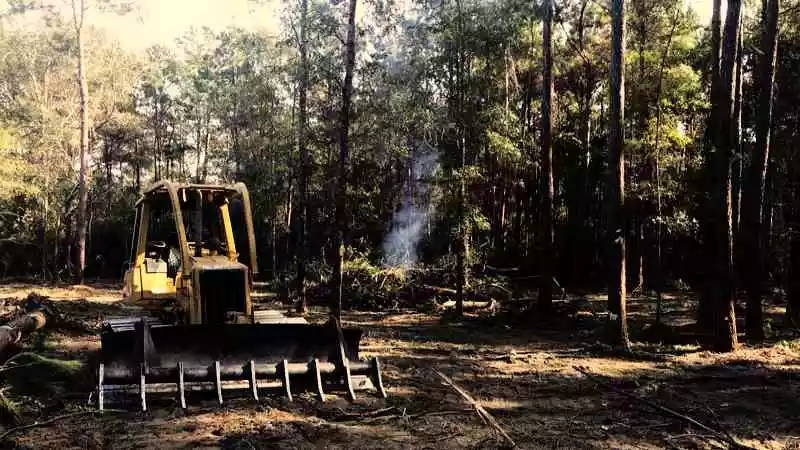
Lastly, understanding that ground height influences the cut depth aids in managing expectations about how much land a single bulldozer can clear within a set timeframe— an average of about 2.67 hours per acre based on industry standards.
Balancing all these aspects ensures optimal use of your construction vehicle for efficient earth-pushing or dirt-removal tasks while controlling labor costs.
Importance of Estimating Land Clearance by a Bulldozer
Estimating the land clearance by a bulldozer is crucial for effective time management and budgeting.
Time management
Managing time effectively is a pivotal aspect of operating a bulldozer. As an operator, your goal should be to maximize productivity by efficiently planning and implementing tasks. Understand that clearing about 3-5 acres of land typically takes up your whole day, with approximately 2.67 hours dedicated to each acre.
This knowledge aids in setting realistic goals, reducing downtime, and ultimately increasing the rate at which you can clear land safely and economically. By mastering proper techniques, such as effectively handling terrain variations or utilizing the full potential of your blade size, you can optimize your bulldozing speed while retaining accuracy and safety measures on-site.
Costing and budgeting
As a bulldozer operator, understanding the importance of costing and budgeting for land clearance is crucial. It allows you to manage your resources effectively and ensure the project stays within financial constraints.
Clearing land can be an expensive endeavor, with costs ranging from $950 to $1700 per day for one acre of land. The hourly rate for land clearing services varies between $150 to $250 per hour in the US.
By accurately estimating and factoring these costs into your budget, you can plan and avoid any unexpected expenses. Remember that terrain, blade size, cutting height, and debris type will influence the final cost of land clearance.
Determining How Much Land a Bulldozer Can Clear in a Day
Determining how much land a bulldozer can clear daily depends on terrain, blade size, and cutting height.
Variables affecting the Bulldozer’s productivity
As a bulldozer operator, it’s important to understand the variables that can impact your productivity on the job. Terrain type plays a significant role, as different landscapes require varying effort and time to clear.
For example, clearing land with loose soil is generally easier than working with rocky or compacted terrain. The size of your bulldozer also matters, as larger machines typically have more power and capabilities for faster and more efficient clearance.
Other factors include the blade size and cutting height of your bulldozer. These features determine how much material you can move in each pass and how closely you can cut down vegetation. Additionally, proper equipment maintenance is crucial for optimal performance, ensuring that all components function correctly.
Average time for clearing an acre
On average, it takes 2.67 hours for a bulldozer operator to clear one acre of land. This time estimate may vary depending on the terrain type and the bulldozer’s blade size. It’s important to remember that obstacles, debris, and vegetation density can also affect how long it takes to clear an acre.
By understanding these variables and implementing efficient techniques, you can maximize productivity and complete land-clearing projects more effectively and safely.
Cost-effective Methods for Land Clearance
There are several cost-effective methods for land clearance, including exploring financial aid options, considering do-it-yourself approaches, and even selling excess timber to offset costs.
Financial aid options
As a bulldozer operator, it’s important to consider the financial aspect of land clearing. Fortunately, there are options available to assist with the cost. One option is to explore financial aid programs and federal grant assistance offered by organizations like the US Department of Agriculture and the National Resources Conservation Service.
These programs can provide much-needed financial support for land-clearing projects. Another option is to sell excess timber on your property. Selling high-value lumber or using firewood can generate income that can help offset the cost of land clearance.
By exploring these financial aid options, you can make land clearing more feasible and cost-effective for your construction or landscaping projects.
Do-it-yourself approaches
When it comes to land clearance, hiring a professional bulldozer operator can be costly. However, if you have the necessary skills and equipment, there are do-it-yourself approaches that can help you save money. Here are some steps to consider:
- Assess the Size of the Project: Before embarking on a DIY land clearance project, assess the area size you need to clear. If it’s a small plot of land, you may be able to handle it yourself. However, it’s important to recognize your limitations and consider hiring a professional for larger projects.
- Rent the Equipment: Renting a bulldozer or other necessary equipment is an affordable alternative to purchasing them outright. Many construction equipment rental companies offer competitive rates and flexible rental periods.
- Learn Proper Operation Techniques: Before operating any heavy machinery, ensure that you understand how to operate it safely and efficiently. Take advantage of online tutorials or instructional videos that provide step-by-step guidance.
- Clear Obstacles: Remove any obstacles from the area before beginning the land clearance process. This includes rocks, trees, and debris that may impede progress or damage equipment.
- Follow Safety Protocols: Always prioritize safety when operating heavy machinery. Wear appropriate protective gear such as helmets, gloves, and steel-toed boots. Additionally, make sure there are no bystanders in the vicinity while working.
- Start Small: Begin by clearing smaller sections of the land at a time instead of trying to tackle the entire area at once. This will allow you to refine your technique and gain confidence before moving on to larger areas.
- Dispose of Debris Properly: Proper disposal of cleared debris is essential for environmental stewardship and compliance with local regulations. Research local waste disposal options or consider recycling materials whenever possible.
Selling excess timber
As a bulldozer operator, you may find that clearing land often results in excess timber. The good news is that you can sell these trees to local lumber companies or individuals looking for firewood.
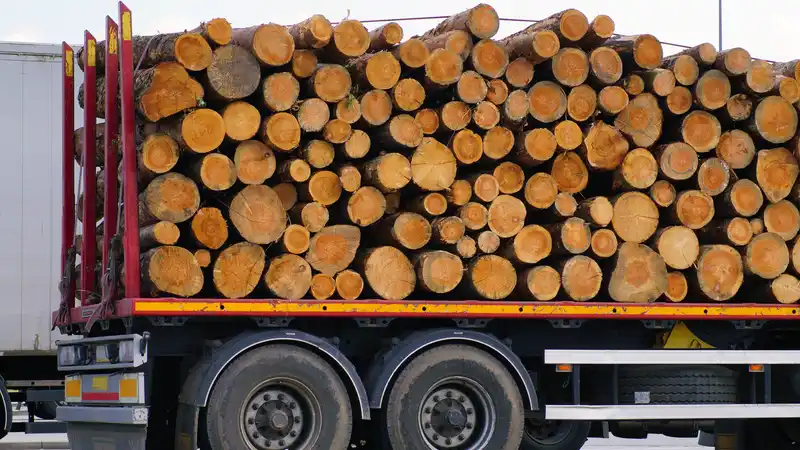
This not only helps offset the cost of land clearing but also provides an additional source of income. High-value lumber such as oak, cherry, or walnut can fetch a good price, so it’s worth exploring this opportunity.
By selling excess timber, you can turn what might have been waste into a profitable endeavor.
Steps to Clear Land with a Bulldozer
To clear land efficiently using a bulldozer, the following steps are typically involved: removing any obstructions like trees and large rocks, turning and reshaping the ground as needed, pushing dirt piles to desired locations, leveling the ground for even distribution of soil, backfilling holes or trenches, and finally grading for a smooth finish.
Removing obstructions
When clearing land with a bulldozer, one of the crucial steps is removing obstructions that may hinder the process. These obstructions can include rocks, tree stumps, vegetation roots, and any other debris on the site.
You ensure a smoother and safer land clearance operation by efficiently removing these obstacles.
To tackle this task effectively, choosing the right attachments for your bulldozer is important. Attachments like tree pushers, tree spears, root rakes, and rippers can help easily eliminate obstacles from your path.
Once you’ve identified an obstruction, position your bulldozer correctly and use the appropriate attachment to remove it.
Remember that safety should always be a priority when removing obstructions. Make sure to wear proper protective gear like gloves and goggles. Additionally, watch for hazards such as underground utilities or unstable ground conditions.
By taking the time to properly clear away obstructions before starting land clearance operations with your bulldozer,
Turning and reshaping the ground
As a bulldozer operator, turning and reshaping the ground is one of the important tasks you’ll encounter during land clearing. With the help of your bulldozer’s powerful blade, you can level and shape the terrain to create a smooth and even surface.
This process allows for easier construction or landscaping projects in the future, ensuring that the land is ready for any purpose. Bulldozers are designed to efficiently move large amounts of dirt, rocks, and debris as you reshape the land according to your desired specifications.
So whether you’re preparing a construction site or transforming an area into a beautiful landscape, your bulldozer’s ability to turn and reshape the ground will be crucial in achieving your goals.
Costs Associated with Land Clearance in 2023
Land clearance costs in 2023 can vary based on the land size, with an average range of $950 to $1700 per day for clearing one acre.
Average costs based on land size
The cost of land clearing varies significantly depending on the land size. Here’s a detailed breakdown of the average costs based on different land sizes:
| Land Size (in acres) | Average Cost for Clearing (in USD) |
|---|---|
| 0.25 | $563 |
| 1 | $2,581 |
| 2-4 | $1,266 to $3,900 |
| 5+ | $8,313 |
Remember that these costs can fluctuate depending on the specific conditions of your land and the region you live in. For instance, densely wooded properties or lands with large obstacles require more time and result in a higher cost. Similarly, location plays a significant role. As mentioned earlier, the cost of land clearing services in India or China is significantly cheaper due to the lower labor costs. On the other hand, the average cost of land clearing in the U.S. is $2,900. So, assessing your circumstances before setting a budget is always best.
Additional costs: brush removal, tree removal, stump removal
When undertaking a land clearing project, it’s essential to consider three significant additional costs: brush removal, tree removal, and stump removal. The costs can vary based on several factors, such as the job’s size, quantity, and complexity. Let’s break down these costs.
| Type of Removal | Average Cost | Additional Factors |
|---|---|---|
| Brush Removal | $20 to $200 per acre | Cost varies based on acreage and density of brush |
| Tree Removal | $150 to $1,900 per tree | Cost depends on the tree’s size and condition |
| Stump Removal | Average cost of $326, with additional costs ranging from $40 to $83 per extra stump | Cost varies based on the size and number of stumps |
As a bulldozer operator, knowing these costs can help you provide accurate estimates to your clients and manage the project efficiently. Remember, these costs are over and above the basic land clearing rate, which is averaged at $2,900 nationally. Understanding this breakdown is crucial in delivering transparent and reasonable pricing to your clients.
Other Relevant Services for Land Clearance
Other services related to land clearance include site preparation, land grading and leveling, drain installation, and waste and debris removal.
Site preparation
As a bulldozer operator, site preparation is a crucial step in land-clearing projects. Before you can effectively clear the land with your machine, it’s important to ensure the site is ready for the task.
This involves removing any obstructions, such as rocks, debris, and vegetation, that may hinder the operation of the bulldozer. By taking the time to prepare the site properly, you can ensure a smoother and more efficient process when it comes to clearing land with your bulldozer.
Remember, safety should always be a top priority during site preparation and throughout all stages of land clearance. Keep in mind that by following proper procedures and utilizing your expertise as an experienced bulldozer operator, you’ll be able to maximize productivity while maintaining safety standards on-site.
Land grading and leveling
As a bulldozer operator, you know that land grading and leveling are crucial steps in the land clearance process. These services ensure that the site is safe and suitable for construction or other purposes.
By using a bulldozer to level the ground, remove obstacles like rocks and boulders, and backfill holes or trenches, you create a stable surface that minimizes erosion risk. This not only improves safety but also enhances the overall aesthetics of the land.
Land grading and leveling are often included in the overall cost of land clearing, depending on the extent of work required. With these services, you can ensure that your construction projects start on solid ground.
Drain installation
As a bulldozer operator, you may need drain installation during land clearance projects. Drainage systems are crucial for preventing water buildup and ensuring proper water flow on construction sites or landscaped areas.
When it comes to drain installation, your bulldozer can play a significant role in preparing the ground and creating trenches or channels for efficient drainage.
With the power and capabilities of your bulldozer, you can easily dig trenches to accommodate drainage pipes. The size and depth of these trenches will depend on factors such as soil conditions and local regulations.
By utilizing your bulldozer’s precision control, you can ensure that the trenches are accurately excavated according to specifications.
Waste and debris removal
As a bulldozer operator, waste and debris removal is an important aspect of land clearing. After pushing aside trees, rocks, and other obstructions with the bulldozer blade, it’s crucial to dispose of the resulting waste and debris efficiently.
This can include tree branches, stumps, rocks, and other materials that need to be cleared from the site. Proper disposal not only ensures a clean work environment but also minimizes potential hazards and allows for smoother progress in your land-clearing project.
Whether you choose to haul away the waste yourself or hire a professional waste removal service, it’s essential to factor in this step when estimating both the time and cost of clearing land with a bulldozer.
DIY vs. Professional Land Clearance Costs
When comparing DIY land clearance costs to professional services, it’s important to consider the equipment rental fees and tools needed for brush removal in the DIY approach.
Equipment rentals for land clearing
When it comes to land clearing, renting the right equipment is crucial for efficient and safe operations. As a bulldozer operator, you need to be aware of the rental costs and understand how to make the most out of your equipment rental.
| Equipment | Hourly Rental Cost | Daily Rental Cost | Weekly Rental Cost |
|---|---|---|---|
| Bulldozer | $150-$250 | $950-$1700 | $1700-$2000 |
| Brush Chipper | $90-$130 | $450-$600 | $1300-$1600 |
| Stump Grinder | $100-$150 | $400-$600 | $1200-$1500 |
| Excavator | $120-$180 | $720-$1080 | $2200-$2700 |
As evidenced in the table, the bulldozer’s rental cost is the most significant expense. With an hourly rate ranging from $150 to $250, this powerful machine can clear an average of 3-5 acres of land in a day. The cost-effective way to utilize a rented bulldozer is by working in a systematic manner, clearing the land first of obstructions like rocks and boulders, then leveling the ground and backfilling holes or trenches.
Other equipment rentals like a brush chipper and stump grinder can also come in handy. These machines are useful in removing excess brush and tree stumps, which a bulldozer might struggle with.
Remember, the efficiency of the land-clearing process depends not only on the bulldozer but also on how well other equipment is used. By strategically renting and deploying these machines, you can clear your land effectively without going over budget.
Tools cost for DIY brush removal.
Getting your hands dirty and deciding to clear your land yourself can be a cost-effective option, but it’s still essential to consider the costs of the tools that will be needed for brush removal. Here is a comprehensive table that breaks down the prices of these tools:
| Tool | Average Cost |
|---|---|
| Chainsaw | $150 – $400 |
| Brush Cutter | $120 – $400 |
| Wood Chipper | $200 – $1,000 |
| Stump Grinder | $100 – $200 per day rental |
| Hand Tools (shovels, rakes, etc.) | $50 – $100 |
| Safety Gear (gloves, goggles, etc.) | $50 – $100 |
Please note that these costs can vary based on the quality of the equipment, the brand, and where you’re making the purchase. In the case of big-ticket items like wood chippers or stump grinders, consider tool rental to save costs. As previously mentioned, brush removal is generally less expensive than other land-clearing methods, with costs ranging from $20 to $200 per acre. However, when deciding on a DIY approach, be sure to account for these tool costs in your overall budget.
Conclusion
In conclusion, understanding how much land a bulldozer can clear in a day is essential for effective land clearance projects. Factors such as terrain, blade size, and cutting height play a crucial role in determining the productivity of a bulldozer.
Hiring a qualified operator ensures efficient and safe land clearing. By estimating land clearance accurately and utilizing cost-effective methods, you can achieve your desired results within budget and time constraints.
So, whether you’re planning new construction or renovating an existing space, proper knowledge, and planning will help you clear land efficiently and safely using a bulldozer.
FAQs
- How much land can a bulldozer clear in a day?
The amount of land that a bulldozer can clear in a day depends on several factors, including the size and power of the bulldozer, the terrain and vegetation on the land, and the skill level of the operator. On average, a medium-sized bulldozer can clear around 2 to 4 acres per day.
2. What is considered efficient and safe land clearing with a bulldozer?
Efficient and safe land clearing with a bulldozer involves careful planning, proper equipment maintenance, skilled operators, adherence to safety protocols, and consideration of environmental impact. It also includes using techniques such as selective clearing or mulching to minimize damage to surrounding vegetation or soil erosion.
3. Are there any regulations or permits required for land clearing with a bulldozer?
Yes, depending on your location and the size of the area being cleared, there may be regulations or permits required for land clearing with a bulldozer. It is important to check with local authorities or environmental agencies to ensure compliance with any applicable laws or requirements before starting any land-clearing activities.
4. Can I use a bulldozer for all types of land-clearing projects?
Bulldozers are versatile machines that can be used for various types of land-clearing projects; however, their suitability depends on factors such as site conditions (terrain, vegetation density), access restrictions (narrow spaces), and intended use after clearance (building construction vs. agricultural purposes). Consulting with experienced professionals can help determine if using a bulldozer is appropriate for your specific project needs.
